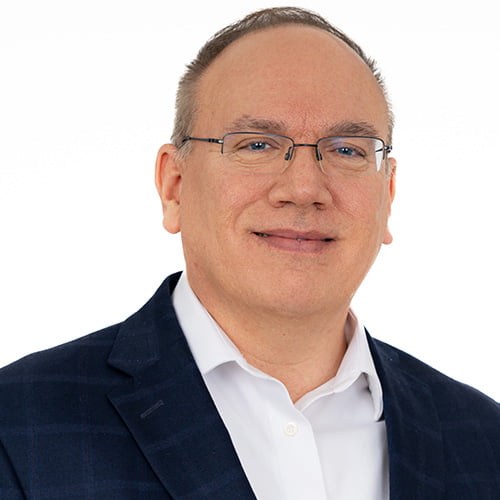Choosing the Right Business Development Model for Your AEC Firm

There are more than 94,000 architectural and engineering firms and almost 720,000 construction firms in the U.S. (Source: U.S. Census Bureau), which translates into 814,000 approaches to generating business! Although that may be a slight overreach, the reality is that there are many different models for business development (BD), including variations and hybrids of the primary approaches. For convenience, the AEC industry often simplifies the common BD approaches by breaking them into three main buckets: Rainmakers, Seller-Doers, and Business Developers.
The Rainmaker
In AEC firms, the term rainmaker is frequently used to refer to founders, executives, or senior staff who focus on generating significant revenue. Regardless of their title, a rainmaker is a high-achieving seller with almost magical sales prowess who leverages their network, relationships, drive, and charisma to create a continual source of work for the firm. Rainmakers aren’t sellers as much as they are advisors, helping to solve their clients’ challenges through the process.
Many first-generation firms were built through the rainmaking model; some operate that way until they grow to a certain size, at which point a new model is introduced. Others rely on the rainmaker until they retire – creating a challenge for second-generation leaders, who may not have the requisite business development skills to replace the rainmaker.
The Seller-Doer
A seller-doer is responsible for generating work and then doing that work. Seller-doer is a role, not a title, and typical positions include principal, vice president, partner, project executive, project manager, branch manager, department manager, and lead architect/engineer/designer/etc. Seller-Doer responsibilities vary significantly from firm-to-firm and even seller-doer to seller-doer within AEC firms.
For instance, in one firm, a seller-doer project manager spends about 5% of their time on BD and the balance acting as a doer – managing the team, meeting clients and subs, even performing technical tasks. This type of seller-doer is responsible for generating more work from their existing clients. Whereas the competitor down the street may have a very different model, with their seller-doers spending 30% of their time on BD and balancing their remaining time performing the work they win. They may generate more work from existing clients and develop relationships with potential new clients.
At times seller-doers are also known as doer-sellers or closer-doers, recognizing that more time is spent doing the work than selling it (doer-seller) or that their sales role is to both close and work on the project (closer-doer). At SN, we use the term seller-doer because a firm must first sell the work before doing it. You can’t do what you haven’t yet sold.
The Business Developer
Now let’s compare the seller-doer with the business developer. As the name implies, this role’s primary responsibility is to develop business for the firm. A dedicated business developer may have a technical background (for instance, an engineering degree or even professional licensure), but in many AEC firms, this is a non-technical role. They may have training and degrees in business, marketing, communications, or other professions unrelated to business development and the AEC industry.
Business developers may drive additional work from existing clients but are more commonly focused on generating opportunities with new clients. In many firms, business developers are the door openers who partner with seller-doers to close projects.
Some firms have combined business developer-marketer positions. Their time is split between pursuing opportunities and managing marketing activities, including website, social media, brochures, case studies, direct marketing, and more. Professionals in this role are often heavily involved with the proposal process as well.
Many firms in the AEC space use a combination of these models, and it may vary by market sector or office/geographic region. For example, a firm with a government practice may use dedicated business developers to connect with government officials, but another practice may rely on seller-doers for business development.
Choosing the Right Model for Your Firm
There is no one-size-fits-all approach. Just because a model is working today doesn’t mean it will tomorrow. Likewise, if you are currently struggling with business development, it may not be an issue with the model itself; perhaps you don’t have the right people in the right roles to succeed.
Furthermore, your firm may require different models based upon:
- Target markets
- Service lines
- Client types
- Geographic regions/offices
It is critical to ensure your go-to-market strategies, including business development models, align both with your markets as well as client preferences.
Common Challenges
Every model has its unique hurdles, but within AEC firms, there are two challenges we see frequently:
- Dedicated Business Developers – companies hire career business developers and expect the projects to start pouring in. However, most business developers need to work collaboratively with subject matter experts and principals/project managers (seller-doers!) to close opportunities. Unless you are in a hard-bid situation, potential clients typically want to interact with the people leading and working on their projects from the early stages of relationship building. To succeed, business developers need robust participation from these project professionals. After all, no client wants to hire a salesperson to engineer or construct their project.
- Seller-Doer – companies hire or promote internally for certain positions (like a project manager or branch manager) and then say: “It is now your responsibility to go get work.” Yet these seller-doers have not been trained in business development and may not have a network, understand the tools and techniques, or be equipped to cross-sell other services. So, they fall back to where they are the most comfortable: doing. And then the selling doesn’t happen.
In both examples, the firm is at fault for not providing the individual with the resources necessary for success. These problems are widespread throughout the AEC industry, wasting countless hours and dollars by forcing a particular model without providing support and creating the culture to allow the model to succeed. Without the proper internal support and corporate culture, these models are primed for failure.
Are you eager to learn more about the many business development models, including advantages and disadvantages, typical responsibilities, and potential time commitments associated with each approach? Join our upcoming webinar Making Rain: Understanding Business Development Models.
If your firm is interested in rethinking its current model and the “who” and “how” of strategically approaching your target markets, please contact me to discuss how we can revitalize your business development strategy.



